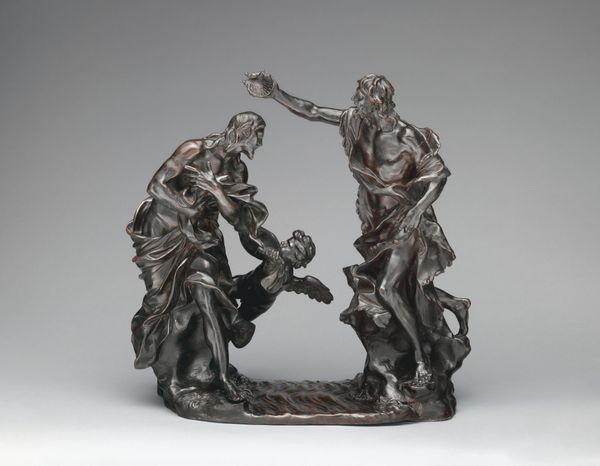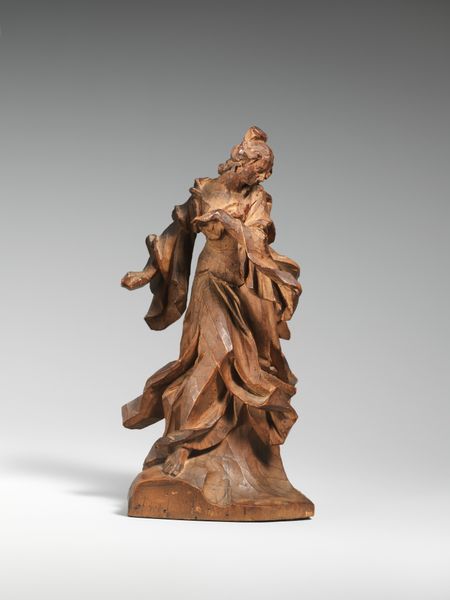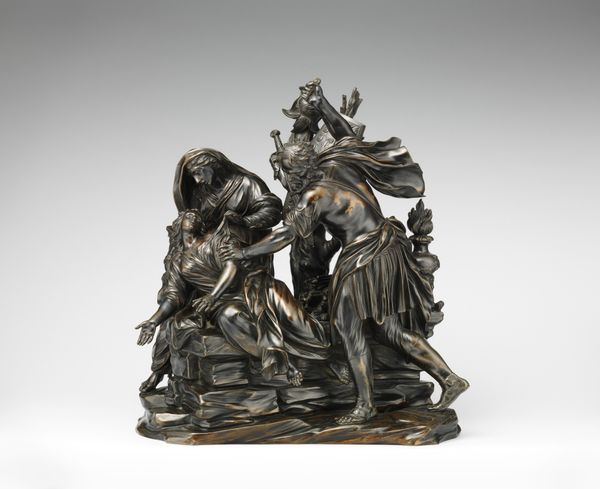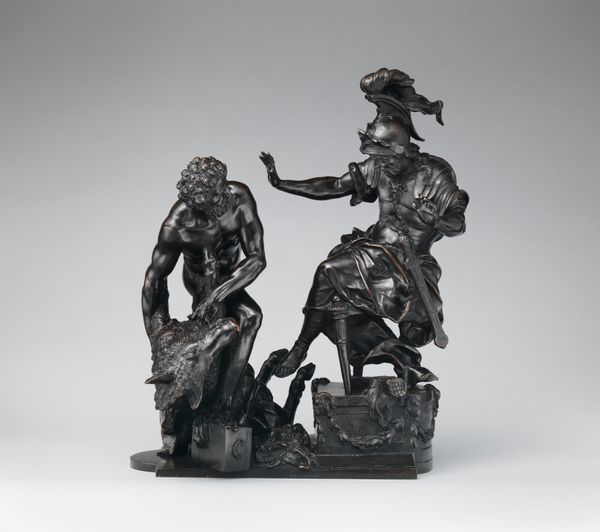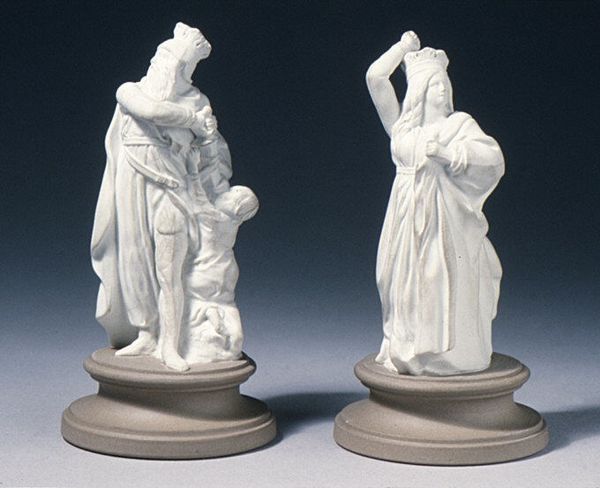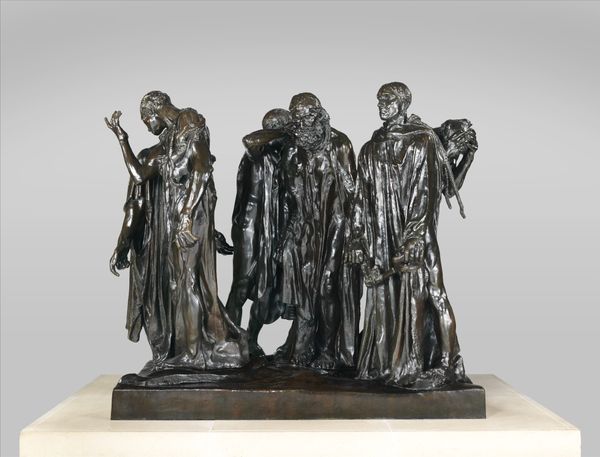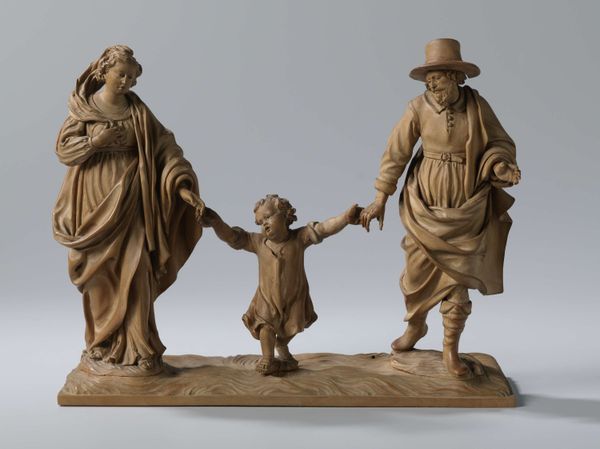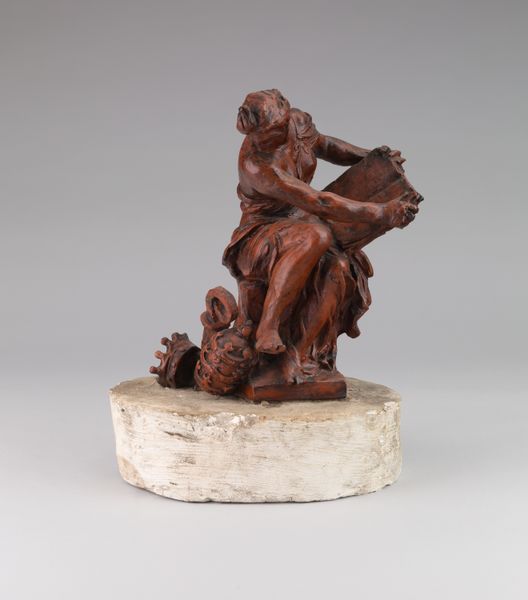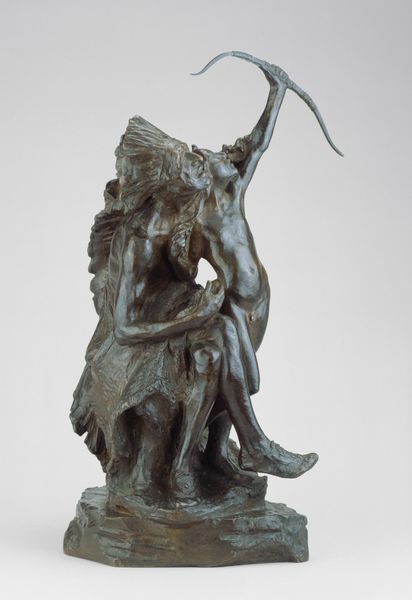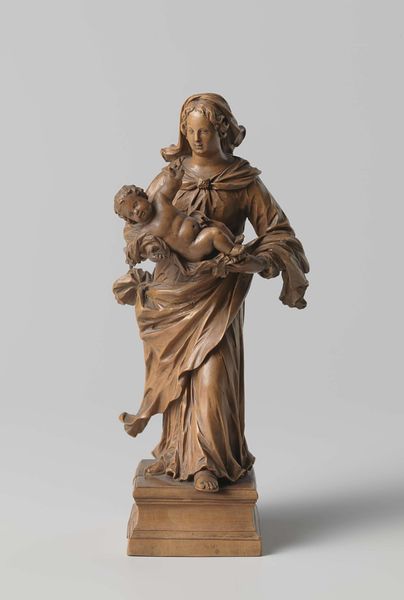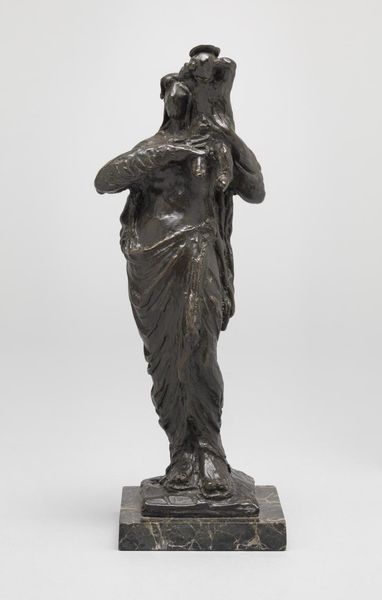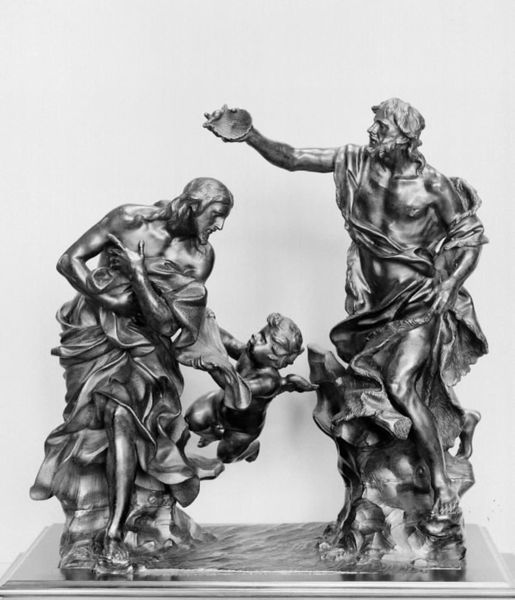
sculpture, wood
#
allegory
#
baroque
#
sculpture
#
figuration
#
sculpture
#
wood
#
decorative-art
Dimensions: Faith: 32.8 cm., Love: 36.3 cm., Hope 32 cm.
Copyright: Public Domain
Curator: At first glance, I see movement, figures caught in an elegant dance. It's dynamic but contained, powerful yet delicate. Editor: Precisely. What we are viewing is a sculpture dating from 1735 to 1745. It’s attributed to Balthasar Ferdinand Moll, and is aptly titled "Faith, Hope, and Charity." The piece is crafted from wood, which adds an unexpected warmth to the Baroque style. You can currently see it displayed at the Metropolitan Museum of Art in New York. Curator: Wood gives it an accessibility, doesn’t it? Makes it less intimidating than marble, perhaps more... human. It brings to mind, quite obviously, the allegorical. Editor: Indeed. During this time, artists often used allegories to subtly communicate philosophical or religious ideas, sidestepping overt pronouncements, often in repressive contexts. Curator: Yes, this brings forth that tension. Each figure embodies a virtue—we understand their significance, these core virtues necessary for salvation in Catholic theology. But the interesting element is in understanding the psychological importance for laypersons, in creating these emotional states within their lives and practices. Editor: The positioning, in my mind, speaks to this quite literally. The swirling drapery adds dynamism. Think of what was happening socially: The Enlightenment was gaining momentum and here we have the sculpted representations, offering stability during the quickening transformation from sacred to secular social rule. Curator: A counterbalance. These weren't just pretty decorations. It’s about reminding the viewer of core, perhaps traditional values amidst massive cultural upheaval. Are we secure because of hope? Because of faith? Because of love? Or will these change? Editor: It’s a dance around power, isn’t it? Between personal morality and overarching societal structures. We see this wooden troika of allegorical figures holding significant weight and in these questions we see the power dynamics between secular and nonsecular existence. Curator: It’s an eternal debate, rendered beautifully in a single piece. I still feel as if the psychological weight lies in our interpretations. What do these women say, feel, to our internal values. Editor: Well said. It will remain ever-evolving in context and that truly gives the artist continued value.
Comments
No comments
Be the first to comment and join the conversation on the ultimate creative platform.
